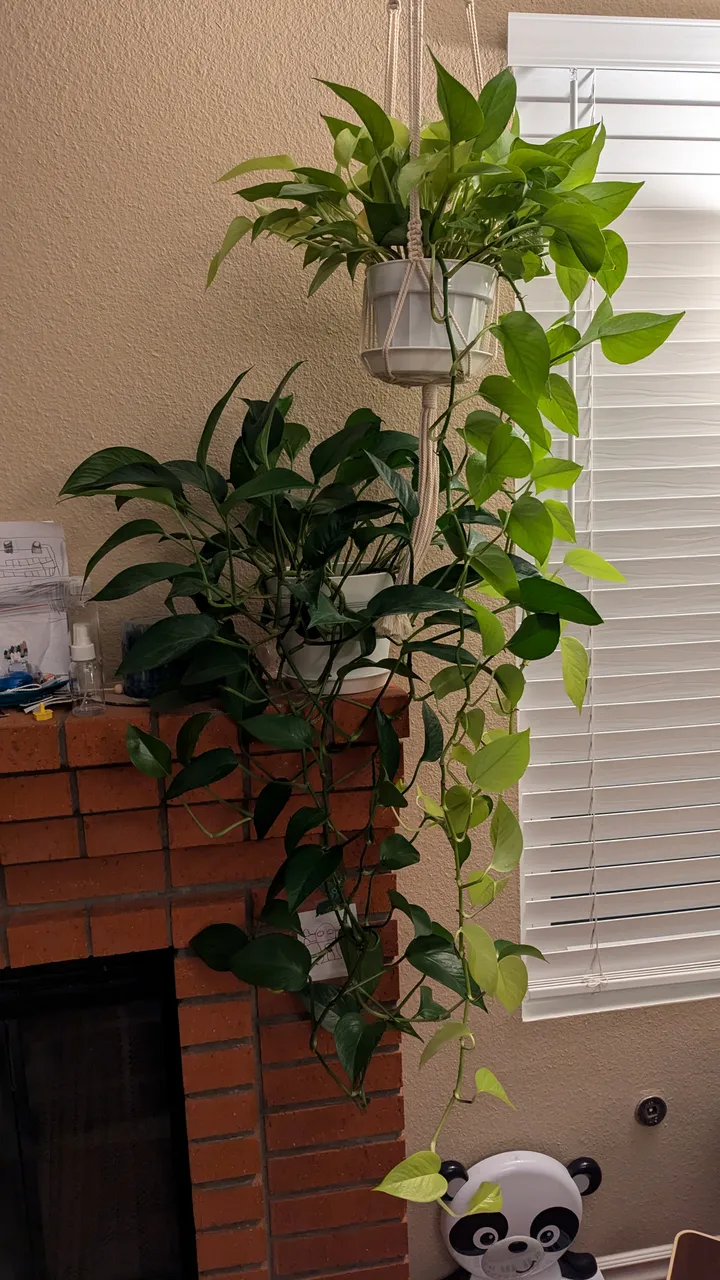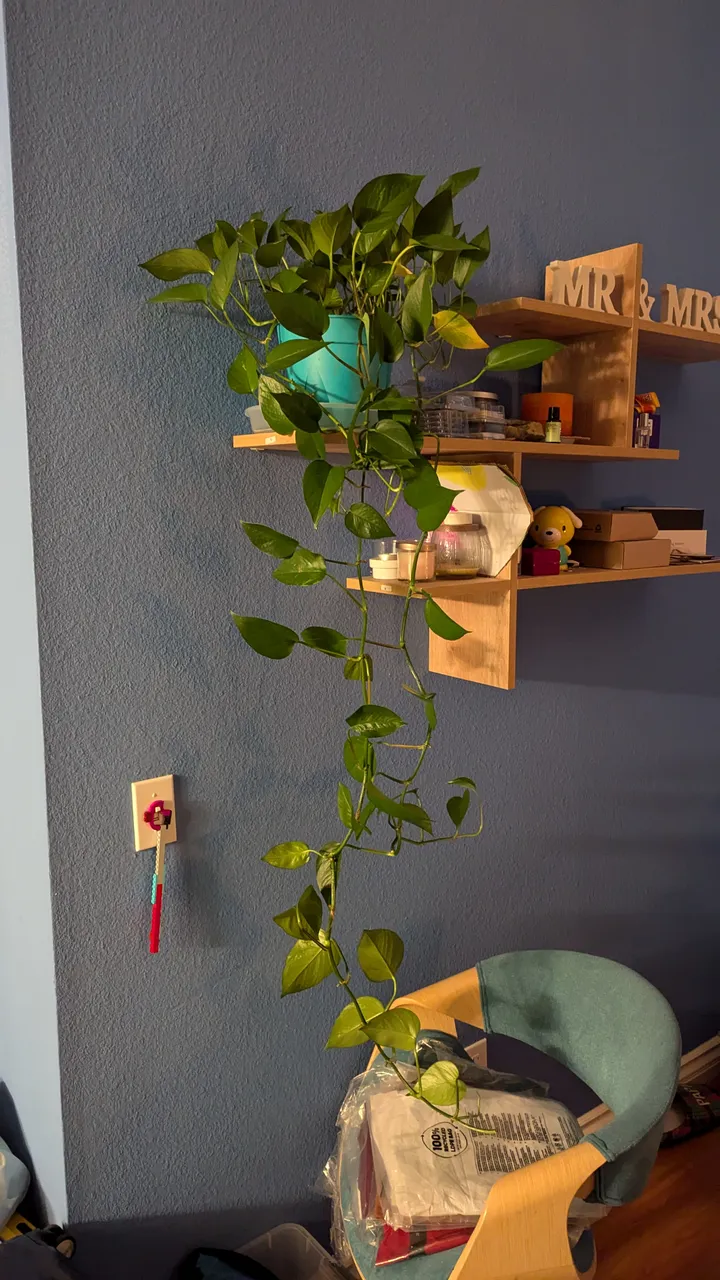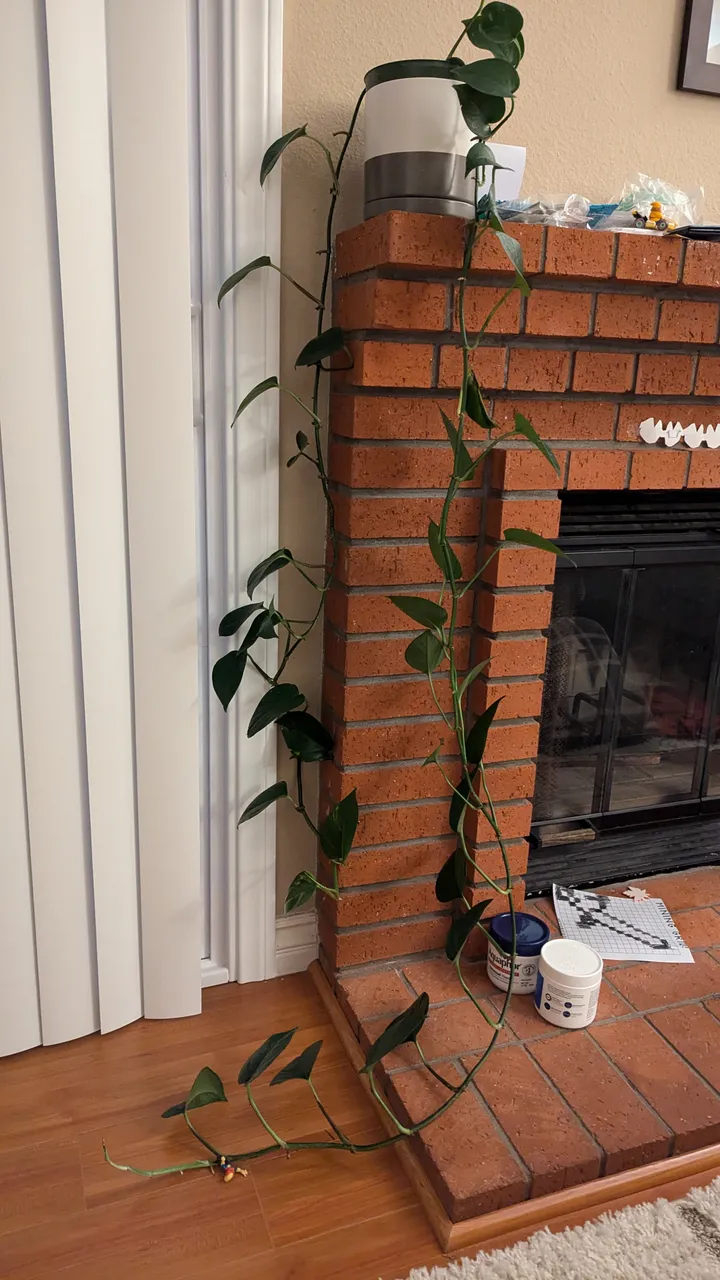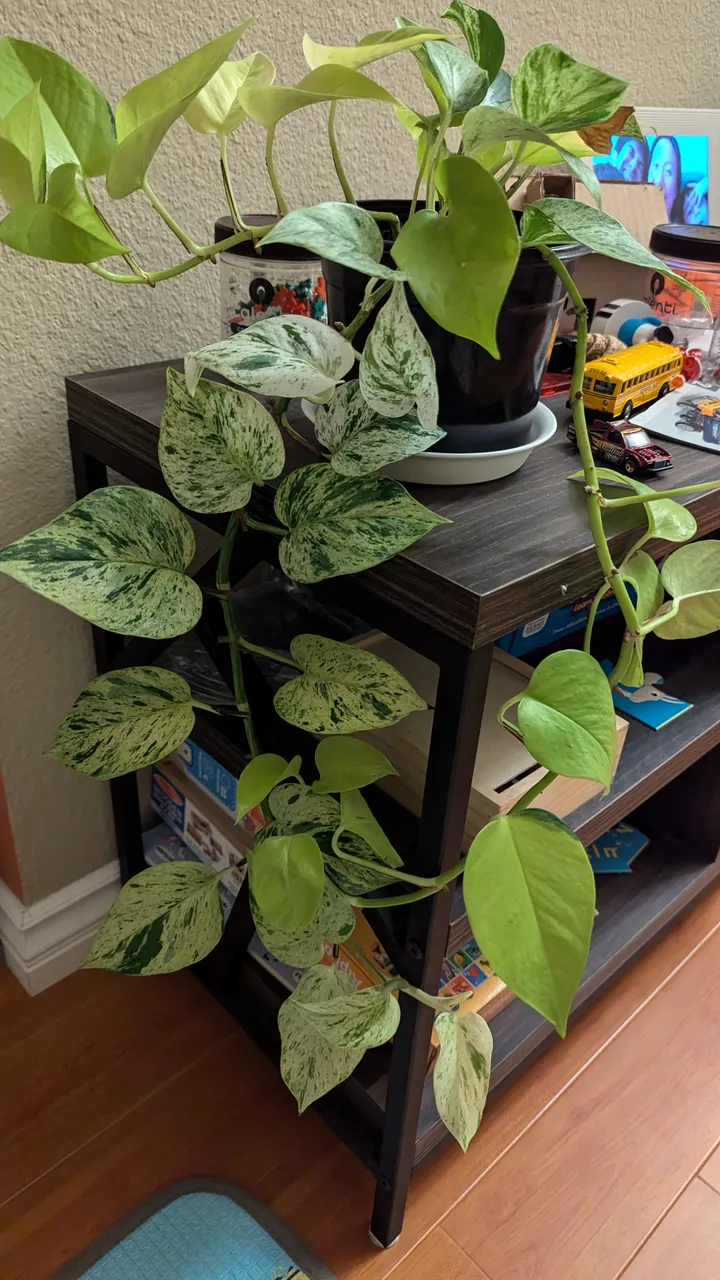Golden pothos is great indoor plants, mostly loved due to their low maintenance needs. I was surprised to realize that my friends who have a track record of not keeping plants alive were growing and keeping this plant in good shape effortlessly. That’s how forgiving it is.
Many people grow this plant to add décor statements in their homes, not knowing the many other benefits it offers. I have several golden pothos plants in my house, and to be honest, I didn’t know about the many benefits they offer, apart from enhancing the aesthetic appeal of indoor spaces.
After a bit of research, I realized several other benefits of this plant, which made me even love it more. Read on to know the many benefits of growing these plants.
1. They Are Very Decorative
Perhaps this is the most obvious reason people grow golden pothos. The heart-shaped and flowing leaves of these plants make them a perfect home décor addition. And when it comes to decorating with them, there are no limitations on creativity.
Small vignettes, as well as big hanging structures, are capable of adding magic to any space. And you can place them anywhere; on top of your wardrobe, on a bathroom shelf or a table beside a sofa, as they don’t have many demands. I particularly love the hanging pothos on my empty wall as they look so good on it. I have also seen some people use them as curtains, either solely or together with other plants that spread well, and it’s incredibly beautiful.

2. Natural Air Purifiers
Sometimes I look at house plants and wonder if they can really do something special apart from adding beauty to a space.
I was surprised the day I learned that golden pothos plants are actually natural air purifiers. And honestly, that’s something special because not all plants can do that. Golden pothos is excellent when it comes to absorbing toxins from the air naturally. Most of these toxins are released in very small amounts, but long-term exposure could cause some health problems.
So how do these plants purify the air? They have tiny pores on the leaves that absorb toxins. The plant then ‘consumes’ the toxins instead of releasing them back into the air. They also have micro-organisms in the roots that neutralize the toxins to make them safe for usage. That means what would be toxic for humans is safe for the plants.
Here are some of the toxins absorbed by this plant from the air.
Benzene
Some common sources of benzene include industrial emissions, detergents, paints, and tobacco smoke. Long-term exposure to this toxin weakens the immune system, making a person susceptible to illnesses. Benzene exposure is also associated with cancer.
Carbon Monoxide
The levels of carbon monoxide in a house can rise as a result of wood fires, use of certain appliances, clogged vents, amongst other sources. If it’s not in high levels, carbon monoxide causes dizziness and headaches, particularly for infants, elderly people, and people suffering from various conditions. Very high levels are dangerous and can cause death.
Xylene
Xylene is a very common toxin in households. It’s present in gasoline, nail paint, adhesives, amongst other products. Short-term exposure to xylene can cause effects like dizziness, confusion, and headaches.
Toluene
Toluene is also a very common toxin found in products such as adhesives and paints. Short-term exposure to toluene has been associated with reduced memory and concentration, amongst other neurological effects. Long-term exposure has been linked to more severe conditions such as vision loss and cognitive impairment.
Even though golden pothos are good at absorbing the toxins discussed above, it’s also important to reduce their concentration in the house by avoiding products that contain them. This is because the toxins might be in very high concentrations that even the plants cannot absorb all of them, putting everyone at risk of health issues. The more pothos you have in your house, the more toxins they absorb from the air.
3. They Increase Indoor Humidity
Golden pothos is great at increasing the humidity in a room. How exactly do they do this? Plants, in general, absorb water after you water them and then get rid of it through the leaves in a process known as transpiration.
During this process, the water gets distributed in the house, increasing the humidity. Golden pothos is good at this, more than several other plants, since their transpiration rate is very high. Humidity offers several benefits, such as hydrating the skin, which is one reason dermatologists recommend having a humidifier for your house.
Golden pothos plants reduce the need to buy an artificial one, as they provide humidity for free. Dry air causes the drying and chapping of the skin and lips, while moist air prevents the same. Moist air is also good at preventing flu and colds. This goes a long way in preventing infections and keeping everyone healthy.

4. Golden Pothos is Very Easy to Grow
Golden pothos is famous for being very easy to grow. Being a busy person, it’s a great advantage since I sometimes forget to tend to my plants. Sometimes I’m out of home for several days, and I have never been worried about my plants getting dry due to lack of water.
I only give them a good watering before leaving. Mostly, I water the plants once a week during the warm seasons and once every two weeks during the cold season. They are also not easily attacked by pests, unlike other house plants.
Another good thing about these plants is that they don’t require direct sunlight to grow. That makes it easy to grow them in any room, as long as it’s not very dark.
Propagating the plant is also easy. You don’t have to buy seedlings or cuttings when you want to grow more pothos if you already have some. Just get some cuttings, put them in clean water, then plant them in pots when the roots start emerging. Additionally, they don’t require a lot of feeding. Adding fertilizer once a month or after two months is enough.
5. They Can Be Grown Together with Other Plants
Just the other day, I came to realize that there are plants that should never be grown together. Luckily, golden pothos can be grown together with several other plants, such as spider plants, snake plants, jade plants, butterfly palms, and asparagus fern.
The secret to growing pothos with other house plants is making sure they share the same growing conditions. For example, succulents can’t grow together with other plants that need a lot of water to survive. One of them will die due to over-watering or inadequate water. For pothos, I consider water and light requirements when growing them together with other plants.
They have to share the same growing needs. Growing several houseplants in one pot comes with several benefits as space is used maximumly, and they also create a beautiful combination that transforms the appearance of any space.

6. They Enhance Moods
Life is full of stressors and pressures. We all need a place where we can relax after a long day at work or in school. Houseplants, including pothos, are known to be great stress relievers. This is one of the reasons I love having them in my bedroom.
Just having a look at them or taking care of them does magic to general mental wellness. Not to forget the health benefits they offer, such as removing toxins. This is also a form of stress-relieving, although indirectly. No one can ever be in peace or calm in a place full of toxins.
When placed in the workplace, these plants increase positivity levels, which in turn enhance productivity.
7. They Rarely Get Affected by Pests
I have studied golden pothos for some time now and realized that they only attract pests if they are unhealthy. Some of the signs that the plants have been infested include discoloration, wilting, and deformed branches and stems.
The good thing is that these can be avoided by making sure the plant is healthy. Generally, a golden pothos that gets adequate water, sunshine, and proper feeding will rarely attract pests. High humidity levels and improper ventilation could also make the plant susceptible to pests’ attacks.
However, even if a plant has been affected, all is not lost. It is easy to eliminate the pest using pesticides and other home remedies such as getting rid of affected plants to prevent the spread of pests to other healthy plants.
8. They Don’t Get Diseases Easily
Golden pothos is rarely affected by diseases. However, if they don’t get the necessary growth requirements, they will get infested. That means if you overwater, underwater, or expose them to high humidity, they are at risk of getting diseases such as bacterial leaf spots, root rot, and stem rot. Some of the signs of diseases in pothos include spots, yellowing and wilting.
Just like it’s easy to keep pests away from the plant, it’s also easy to keep it free from diseases by adding just enough water, avoiding contact of leaves with water, and making sure the potting soil doesn’t have pathogens before planting.
This advice doesn’t just apply to Golden Pothos. I have several other Pothos varieties at home, including Jade, Neon, Marble Queen, and Njoy. They’ve all been relatively easy to grow. However, the Njoy has been the most challenging because it requires a lot of light for its leaves to grow bigger. Both the Marble Queen and Njoy also need ample light to keep their white markings from turning a yellowish-green.

